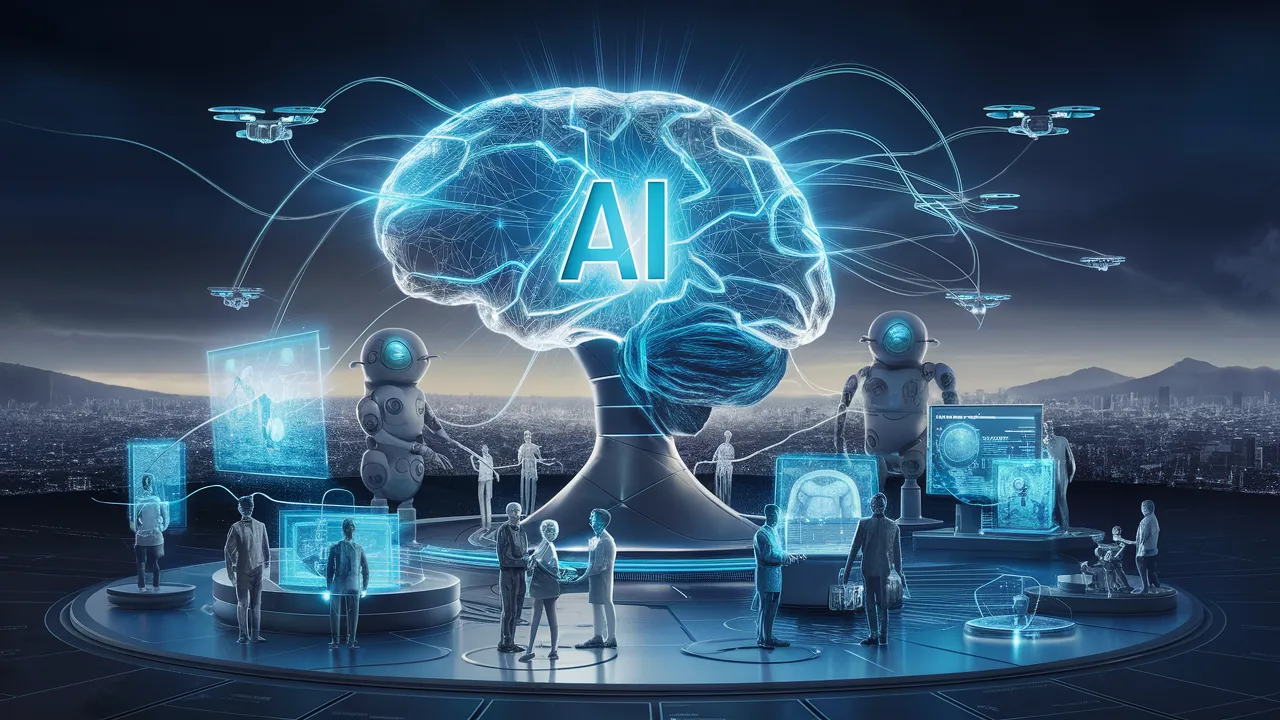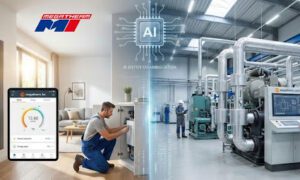Anudeep Katangoori, Data Architect , Swift Transportation
Welcome to a world where the extraordinary is getting ordinary! As we stand on the point of a technological revolution, artificial intelligence( AI) and machine literacy are not just buzzwords, they’re reshaping our daily lives in ways we never imagined. From substantiated shopping gests that predict your tastes before you indeed know them, to smart homes that learn your routines and acclimatize at lightning speed, AI is weaving itself into the veritable fabric of reality. In this blog post,” The Future is Now Exploring the Impact of AI and Machine Learning on Our Lives,” we’ll dive deep into how these groundbreaking technologies are transubstantiation everything from healthcare to entertainment, empowering us with tools for effectiveness and invention while also raising important questions about ethics and sequestration. Buckle up as we embark on an instigative trip through the moment’s digital geography — because the future is not just coming; it’s formerly then!
Introduction to AI and Machine Learning
Welcome to a world where machines learn, adjust, and indeed think for themselves. The rise of fake insights (AI) and machine learning is no longer the stuff of science fiction; it’s a fundamental portion of our ordinary lives. From personalized suggestions on gushing stages to virtual colleagues that oversee our plans, AI and machine learning are reshaping how we are connected with innovation.
As these progressions proceed to advance at a fast pace, it’s fundamental to get its implications—both positive and negative. Connect us as we investigate the transformative effect of AI and machine learning on society nowadays and what the future may hold for this groundbreaking innovation.
Understanding the Basics: What is AI and Machine Learning?
Artificial Intelligence (AI) refers to the simulation of human intelligence in machines. These systems are designed to think, learn, and solve problems like a human.
Machine Learning (ML) is a subset of AI. It focuses on algorithms that enable computers to learn from data without explicit programming. This means they can improve their performance over time based on experience.
Imagine teaching a child through examples rather than instructions. That’s how ML works; it recognizes patterns and makes predictions or decisions based on input data.
From recommending movies you might enjoy to recognizing speech commands, AI and Machine Learning are becoming integral parts of our everyday interactions with technology. Their ability to process vast amounts of information quickly sets them apart from traditional computing methods.
The History and Development of AI and Machine Learning
The journey of AI and Machine Learning began in the mid-20th century. Pioneers like Alan Turing laid the groundwork with concepts that questioned machine intelligence.
In the 1950s, researchers developed the first algorithms, sparking interest in creating machines that could learn from data. The term “artificial intelligence” was coined at a conference at Dartmouth College in 1956, marking a significant milestone.
Throughout the decades, progress ebbed and flowed. The early optimism faced setbacks due to limited computing power and lack of data. However, advancements during the late 1990s revived excitement as computational capabilities improved dramatically.
The emergence of big data in the 2000s supercharged these developments. Suddenly, vast amounts of information became available for training models, leading to breakthroughs we now see today across various sectors—from healthcare to finance—transforming our interaction with technology.
Current Applications of AI and Machine Learning in Our Daily Lives
AI and machine learning have woven themselves into the fabric of our daily routines. From personalized recommendations on streaming platforms to smart assistants like Siri or Alexa, these technologies enhance how we interact with digital content.
In healthcare, AI systems analyze vast amounts of data to detect diseases early. This can lead to quicker diagnoses and more effective treatments for patients.
Transportation is also evolving. Ride-sharing apps utilize algorithms that optimize routes in real-time, making commutes smoother than ever before.
Retail experiences are shifting too. Machine learning helps businesses predict customer preferences, tailoring marketing efforts and inventory management accordingly.
Even in finance, AI analyzes spending patterns to detect fraud proactively, ensuring a safer banking experience for users. Each application demonstrates how deeply ingrained AI and machine learning have become in modern life while continually shaping our future interactions.
The Potential Impact of AI and Machine Learning on Society, Economy, and Jobs
AI and machine learning are set to transform our society in profound ways. From healthcare innovations to smarter cities, these technologies promise enhanced efficiency and improved quality of life.
In the economy, businesses can leverage AI for data analysis and decision-making. This could lead to increased productivity and growth. However, it also raises questions about job displacement as machines take over repetitive tasks.
Employment landscapes will shift dramatically. While some jobs may vanish, new roles focused on managing AI systems will emerge. Upskilling becomes essential for the workforce to adapt.
Societal implications run deep as well. Ethical dilemmas around privacy and bias demand attention from policymakers. The challenge lies in harnessing these advancements responsibly while ensuring inclusivity across all sectors.
As we navigate this uncharted territory, collaboration between technologists, governments, and communities is crucial for a future that benefits everyone.
Ethical Concerns Surrounding the Use of AI and Machine Learning
As we embrace AI and machine learning, ethical concerns arise. These technologies can amplify biases present in data. If algorithms learn from flawed information, they may perpetuate discrimination.
Privacy is another critical issue. With vast amounts of personal data being collected, there’s a risk of misuse. People often don’t realize how their information might be employed or shared.
Autonomy also comes into play. As machines make decisions for us, the question of control surfaces. Are we sacrificing our decision-making abilities to automated systems?
Moreover, accountability remains murky when errors occur. Who takes responsibility if an AI makes a harmful mistake? This lack of clarity complicates trust in these technologies.
Lastly, the potential for job displacement is concerning as well. Many fear that automation will lead to widespread unemployment without adequate safety nets in place for affected workers.
Conclusion
Artificial intelligence and machine learning are no longer concepts of the distant future—they are actively reshaping the world around us. From personalized recommendations to self-driving cars and predictive healthcare, AI is embedded in our everyday lives, driving innovation and improving efficiency across industries. As we continue to harness its potential, the key lies in developing these technologies responsibly—balancing advancement with ethical considerations, transparency, and inclusivity. The future isn’t something we’re waiting for—it’s unfolding in real time. The decisions we make today will shape how AI influences our lives tomorrow. In this rapidly evolving digital age, one thing is certain: the future is now.





























